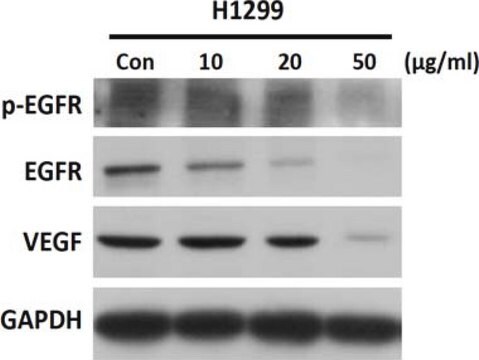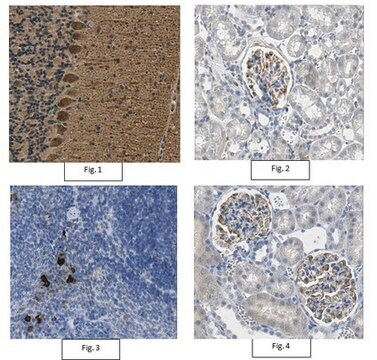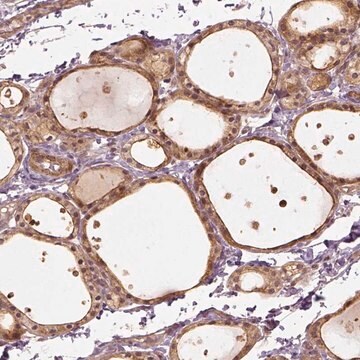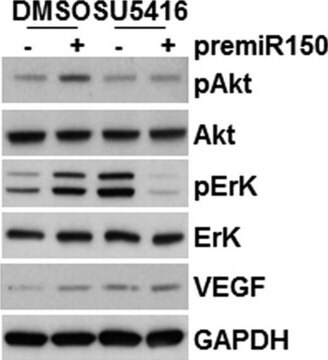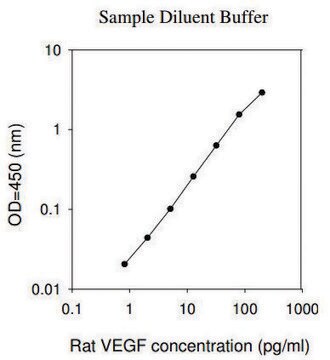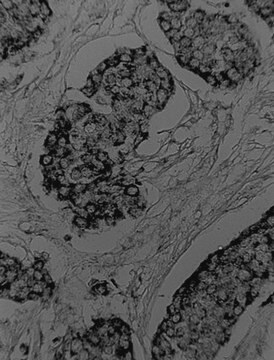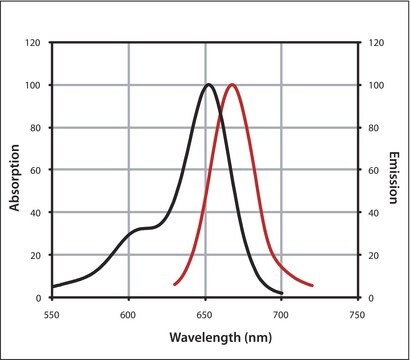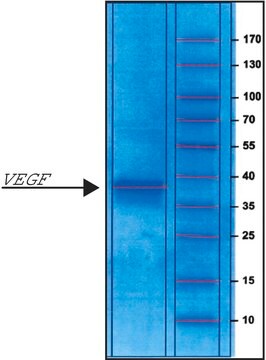07-1420
Anti-VEGF Antibody
from rabbit, purified by affinity chromatography
Synonim(y):
Vascular permeability factor
About This Item
Polecane produkty
pochodzenie biologiczne
rabbit
Poziom jakości
forma przeciwciała
affinity purified immunoglobulin
rodzaj przeciwciała
primary antibodies
klon
polyclonal
oczyszczone przez
affinity chromatography
reaktywność gatunkowa
mouse, human
metody
ELISA: suitable
immunohistochemistry: suitable (paraffin)
western blot: suitable
izotyp
IgG
numer dostępu NCBI
numer dostępu UniProt
Warunki transportu
dry ice
docelowa modyfikacja potranslacyjna
unmodified
informacje o genach
human ... VEGFA(7422)
Opis ogólny
Specyficzność
Immunogen
Zastosowanie
Neutralization: To yield one-half maximal inhibition [ND50] of the biological activity of mouse VEGF (50.0 ng/mL), a concentration of 1.0-2.0 µg/mL of a previous lot of this antibody was required.
ELISA: A concentration of at least 0.5 µg/mL (100 μL/well) is required to detect 0.2-0.4 ng/well of recombinant mouse VEGF using a previous lot of this antibody.
Optimal working dilutions must be determined by the end user.
Signaling
Growth Factors & Receptors
Jakość
Western Blot Analysis:
1:500 dilution of this lot detected VEGF on 10 μg of Huvec lysates.
Opis wartości docelowych
Powiązanie
Postać fizyczna
Przechowywanie i stabilność
Handling Recommendations: Upon first thaw, and prior to removing the cap, centrifuge the vial and gently mix the solution. Aliquot into microcentrifuge tubes and store at -20°C. Avoid repeated freeze/thaw cycles, which may damage IgG and affect product performance.
Komentarz do analizy
Huvec cell lysate
Oświadczenie o zrzeczeniu się odpowiedzialności
Nie możesz znaleźć właściwego produktu?
Wypróbuj nasz Narzędzie selektora produktów.
Kod klasy składowania
13 - Non Combustible Solids
Klasa zagrożenia wodnego (WGK)
WGK 3
Temperatura zapłonu (°F)
Not applicable
Temperatura zapłonu (°C)
Not applicable
Certyfikaty analizy (CoA)
Poszukaj Certyfikaty analizy (CoA), wpisując numer partii/serii produktów. Numery serii i partii można znaleźć na etykiecie produktu po słowach „seria” lub „partia”.
Masz już ten produkt?
Dokumenty związane z niedawno zakupionymi produktami zostały zamieszczone w Bibliotece dokumentów.
Klienci oglądali również te produkty
Nasz zespół naukowców ma doświadczenie we wszystkich obszarach badań, w tym w naukach przyrodniczych, materiałoznawstwie, syntezie chemicznej, chromatografii, analityce i wielu innych dziedzinach.
Skontaktuj się z zespołem ds. pomocy technicznej